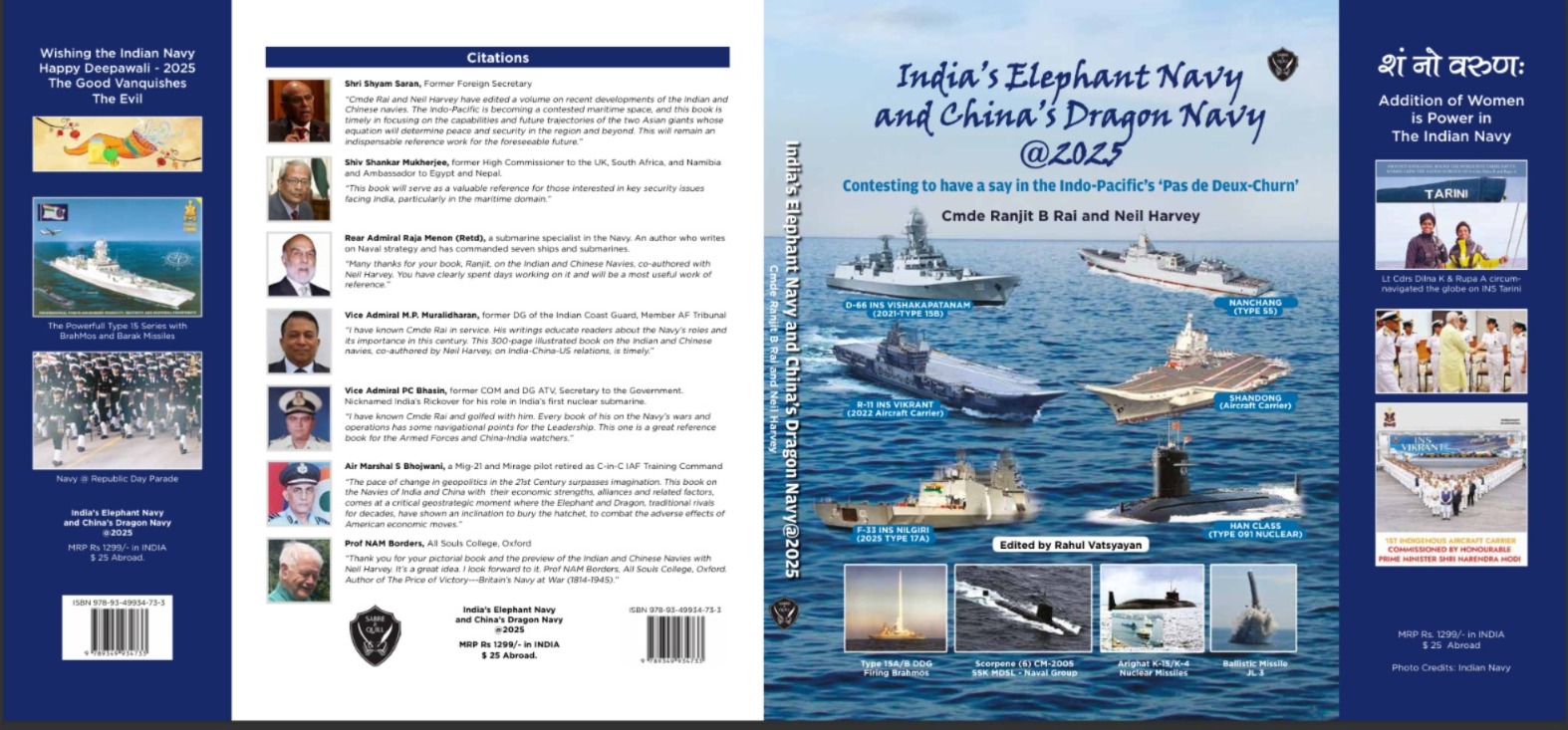In India’s Elephant Navy and China’s Dragon Navy @2025, Commodore Ranjit B. Rai and Neil Harvey deliver an illuminating and visually rich exploration of Asia’s two ascending naval powers—India and China—whose maritime trajectories are redefining the balance of power in the Indo-Pacific. This 286-page illustrated volume fuses operational insight with cultural interpretation, charting how two ancient civilisations have turned to the seas to secure their futures in an era of strategic flux.
The book’s framing is as compelling as it is unique. By invoking the metaphors of the Elephant and the Dragon, the authors transcend mere hardware analysis to capture the temperament, traditions, and geopolitical instincts of both navies. The Elephant—steady, patient, and determined—symbolises India’s long-term, indigenisation-driven naval expansion. The Dragon—restless, ambitious, and assertive—embodies China’s relentless pursuit of maritime dominance. Together, they represent the twin forces shaping the Indo-Pacific’s emerging “Pas de Deux-Churn,” a phrase that neatly encapsulates the uneasy rhythm of competition and coexistence now unfolding across the region’s waters.
Cmde Rai, a veteran of the Indian Navy and one of its foremost maritime thinkers, brings the gravitas of a practitioner-scholar. His past experience as Director of Naval Operations and Intelligence lends authority to his analyses of nuclear deterrence, shipbuilding ecosystems, and doctrinal evolution. Co-author Neil Harvey, a naval enthusiast from Bristol, complements Rai’s strategic narrative with striking imagery and detailed visual documentation—making the book both a research reference and a collector’s delight.
Across its eleven chapters, the book examines the rapid modernisation of both fleets—India’s aircraft carriers INS Vikrant and INS Vishakhapatnam class destroyers on one hand, and China’s Shandong carrier and Type 055 cruisers on the other. It offers crisp fleet comparisons, tables of capabilities, and nuanced commentary on the balance between nuclear deterrence and conventional power projection. The vivid colour plates of submarines, surface combatants, and naval formations make the text accessible to both professionals and lay readers.
Beyond its technical precision, the book’s strength lies in contextualisation. It links maritime expansion to national identity—China’s conception of Zhōngguó as the civilisational centre of the world and India’s revivalist narrative under Atmanirbhar Bharat. These philosophical contrasts help Western readers grasp how maritime strategy in Asia is as much about history and perception as about tonnage and missile range.
Endorsed by leading figures such as former Indian Foreign Secretary Shyam Saran, former High Commissioner Shiv Shankar Mukherjee, and strategic experts like Rear Admiral Raja Menon and Air Marshal S. Bhojwani, the book has already earned recognition as a valuable reference for policymakers and analysts. As Saran notes, it is “an indispensable reference work for the foreseeable future.”
For Western strategists seeking to understand the shifting maritime balance of the 21st century, this volume offers a rare regional vantage point—unfiltered, richly illustrated, and intellectually grounded. India’s Elephant Navy and China’s Dragon Navy @2025 stands as both a tribute to two great seafaring civilisations and a timely reminder that the Indo-Pacific’s future will be decided not only by fleets, but by philosophies.
Verdict: A lucid and visually stunning study of Asia’s maritime awakening—an essential addition to every naval analyst’s shelf.

